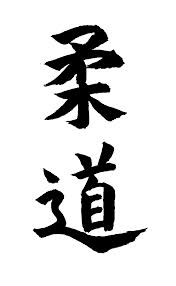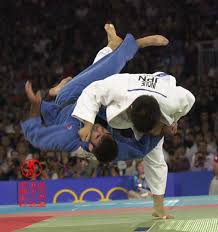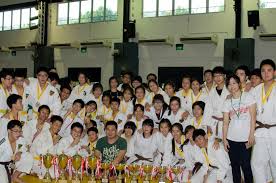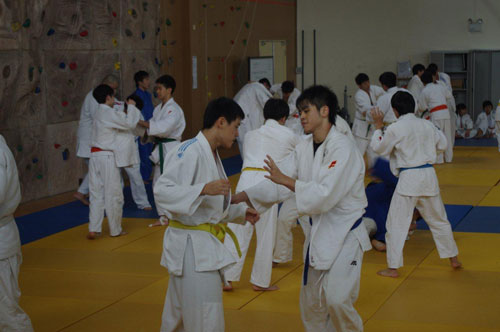About us
The Raffles Judo Club is one of the oldest CCA groups in Raffles Institution. We encourage all levels of participation from the recreational player to the competitor. Our mission as a Judo club is to impart to our members not only the physical skills of Judo, but its philosophy and traditions.
The Sport
Judo
Judo (柔道 jūdō, meaning "gentle way") is a modern martial art, combat and Olympic sport created in Japan in 1882 by Jigoro Kano (嘉納治五郎). Its most prominent feature is its competitive element, where the objective is to either throw or takedown an opponent to the ground, immobilize or otherwise subdue an opponent with a pin, or force an opponent to submit with a joint lock or a choke. Strikes and thrusts by hands and feet as well as weapons defenses are a part of judo, but only in pre-arranged forms (kata: 型) and are not allowed in judo competition or free practice (randori: 乱取り). A judo practitioner is called a judoka.


Basic Throws
In Raffles Judo, our training program focuses on developing our students holistically, and consists of three tiers, Judo training being one of them. There are three basic categories of waza (技, techniques) in judo: nage-waza (投げ技, throwing techniques), katame-waza (固技, grappling techniques) and atemi-waza (当て身技, striking techniques). Judo is most known for nage-waza and katame-waza.
Nage waza (throwing techniques)
Nage waza include all techniques in which tori attempts to throw or trip uke, usually with the aim of placing uke on his back. Each technique has three distinct stages:
Kuzushi (崩し), the initial balance break;
Tsukuri (作り), the act of turning in and fitting into the throw;
Kake (掛け), the execution and completion of the throw.
Nage waza are typically drilled by the use of uchi komi (内込), repeated turning-in, taking the throw up to the point of kake. Traditionally, nage waza are further categorised into tachi-waza (立ち技, standing techniques), throws that are performed with tori maintaining an upright position, and sutemi-waza (捨身技, sacrifice techniques), throws in which tori sacrifices his upright position in order to throw uke. Tachi-waza are further subdivided into te-waza (手技, hand techniques), in which tori predominantly uses his arms to throw uke; koshi-waza (腰技, hip techniques) throws that predominantly use a lifting motion from the hips; and ashi-waza (足技, foot and leg techniques), throws in which tori predominantly utilises his legs.
Ō goshi (大腰 major hip throw) is one of the original 40 throws of Judo as compiled by Jigoro Kano. It is classified as nage waza. The hip plays a central role in the execution of the technique. In this technique, kuzushi (崩し the balance break) is to uke's front. Tsukuri (作り turning/fitting in) involves tori turning his hips, moving them in front and below uke's hips, with tori's tsurite (釣手 lifting (lapel-side) hand)) passing behind uke's back, usually under uke's arm, while minimising the amount of space between tori's back and uke's chest. Tori's hikite (引手 pulling (sleeve-side) hand) pulls uke's arm to the front, maintaining the balance break. Kake (掛け the execution of the throw) involves tori lifting with the hips and bending forward while continuing the pull to the front and down, bringing uke onto the mat at tori's feet.
Katame waza (grappling techniques)
Katame waza is further categorised into osaekomi-waza (押込技, holding techniques), in which tori traps and pins uke on his back on the floor; shime-waza (絞技, strangulation techniques), in which tori attempts to force a submission by choking or strangling uke; and kansetsu-waza (関節技, joint techniques), in which tori attempts to submit uke by painful manipulation of his joints. A related concept is that of ne-waza (寝技, prone techniques), in which waza are applied from a non-standing position. In competitive judo, Kansetsu-waza is currently limited to elbow joint manipulation. Manipulation and locking of other joints can be found in various kata, such as Katame-no-kata and Kodokan goshin jutsu.
Ippon Seoinage (一本 背負投) is a throw in judo. It is one of the nineteen accepted techniques in Shinmeisho No Waza of Kodokan Judo, and is classified as katame waza
Atemi-waza (striking techniques)
Atemi-waza are techniques in which tori disables uke with a strike to a vital point. Atemi-waza are not permitted outside of kata.
The Raffles Judo Club
We are one of the oldest CCA groups in Raffles Institution. We encourage all levels of participation from the recreational player to the competitor. Our mission as a Judo club is to impart to our members not only the physical skills of Judo, but its philosophy and traditions. Many students seek us out for self-defense training, and that is definitely one of the things Judo provides--not just through concrete skills, but through increased confidence and awareness. We try to introduce students to Judo as a lifetime pursuit, a skilled art requiring infinite perfecting. By introducing traditional Judo etiquette and teaching the Japanese names of the techniques we also introduce our members to the sport's cultural roots. For many of us, the club is a place of stability and community, where people watch out for you, in and out of the club.

Training Program
In Raffles Judo, our training program focuses on developing our students holistically, and consists of three tiers; Judo Training, Strength & Conditioning, and Mental Skills Training. Judo training is an ideal form of physical exercise. It serves as a great cardiovascular workout, which improves stamina, general health and overall fitness. Physical strength is also improved as a direct result of trying to control and dictate the movement of the opponent. Judo player will also improve their flexibility. For the same reasons the balance and posture of a player will also be enhanced. Physical co-ordination can be seen to develop dramatically from participation in Judo and reflexes are also improved together with mental reaction time.
Trainings are held on Monday, Wednesday and Saturday. Each session lasts about 3 hours.

Overseas Trip
This year, the judokas will get a once-in-a-lifetime chance to go to Osaka, Japan. They will be training with top players from Tenri University, a school that has been producing international champions since 1974.
Other than judo trainings, the judokas will get a chance to immerse themselves in the Japanese way of life by staying with the host families for a few days. This exchange allows them to gain a deeper insight into the Japanese culture.





